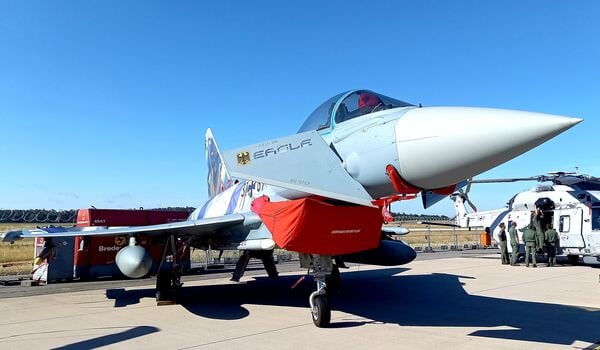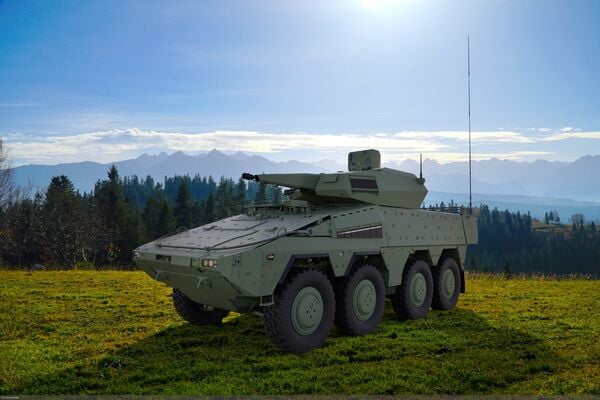- About
- Intara
- Capabilities
- Advisory
- Resources
- News
- Store
Pacific Fleet commander wants wraps kept on unmanned capability development
20 February 2024
by Richard Scott


A MANTAS T-12 USV, front, operates alongside Royal Bahrain Naval Force fast-attack craft RBNS Abdul Rahman Al-fadel during operations in support of Task Force 59 in the Gulf. (US Navy)
Anxious to avoid gifting an operational advantage to China, the US Navy's senior officer in the Pacific said the service will maintain a veil of secrecy over the pace at which it is ‘operationalising' new unmanned systems capabilities and concepts in the Pacific Fleet.
In his 14 February keynote to the AFCEA International and US Naval Institute WEST 2024 event in San Diego, California, Admiral Sam Paparo, commander of the US Pacific Fleet and nominated as the next commander of Indo-Pacific Command, told attendees that work was progressing to integrate unmanned surface vehicles (USVs), unmanned underwater vehicles (UUVs), and unmanned aerial vehicles (UAVs) into the navy's combat force.
However, he added that the navy did not want to give away its playbook. “There's a good reason why you haven't heard about what we're doing. And it ain't because we ain't doing anything.”
Chinese bomber launches new ballistic missile
03 May 2024
by Akhil Kadidal


China first unveiled the new ALBM in November 2022, during AirShow China 2022. At the time, the two missiles unveiled had a yellow stripe and a code signifying that they were training missiles (as shown in the image, in the top part of this graphic). Recent imagery shows the ALBM in a low-observable grey-blue colour scheme, indicating that the missile is progressing to production. (Janes/Gettyimages)
China's People's Liberation Army (PLA) has released a video showing a Xi'an H-6K strategic bomber launching a new ballistic missile in flight.
Imagery of the air-launched ballistic missile (ALBM) being dropped from the H-6K was included in an official PLA video released on 1 May. In the video, the new missile is dropped from the port side wing pylon of an H-6K. The missile, which has the tentative designation of KD-21, is not shown igniting its engine.
The new ALBM is potentially a hypersonic missile, similar to the Russian Kh‐47M2 Kinzhal (AS-24 ‘Killjoy'). Janes has previously assessed that the KD-21 ALBM is likely powered by a solid-propellant rocket engine. However, it is unclear if the KD-21 in the recent video was equipped with an engine.
Luftwaffe yet to decide on final Tornado replacement numbers
02 May 2024
by Gareth Jennings


A Luftwaffe Eurofighter on the flightline at the 2022 ILA Berlin Airshow. The service has told Janes that it does not yet know how many additional aircraft it will buy to replace the 90 Tornados being retired. (Janes/Gareth Jennings)
The German Luftwaffe has not yet determined how many new combat aircraft it is to acquire to replace its fleet of Panavia Tornados, a senior service official told Janes on 2 May.
Responding to a request for clarification and confirmation of the 85 new aircraft figure previously given by industry officials, Commanding General of Air Force Forces Command, Lieutenant General Günter Katz, said the Luftwaffe had never formally declared a one-for-one replacement of the Tornado, and that “a new target number does actually not exist”.
German Army re-establishes air defence force
02 May 2024
by Nicholas Fiorenza


The German Army's re-established air defence force is scheduled to receive Skyranger 30 air-defence systems in 2026. (Rheinmetall)
The German Army announced on its website on 30 April that it is re-establishing its air defence force, initially based in Lüneburg, northern Germany.
The force was disbanded in 2012 but is being re-established as part of the Bundeswehr's refocus on national and alliance defence. Initially, the force will be equipped with Skyranger 30 air-defence systems mounted on Boxer armoured vehicles, providing mobile short-range air defence. This capability will be operated jointly with the IRIS-T SLS (Surface Launched Short Range) air-defence system being procured by the Luftwaffe, the German Air Force.
In addition to the Skyranger 30 procurement, the Bundeswehr has begun identifying personnel for the Germany Army's air defence force, with training scheduled to begin in 2024. A co-ordination and control staff will be established in 2025.
The first unit is scheduled to receive Skyranger 30 systems in 2026, with the completion of the establishment of the air defence force planned by 2028.
Anxious to avoid gifting an operational advantage to China, the US Navy's senior officer in the Paci...
Latest Podcasts
Using OSINT to support law enforcement
Ritu Gill, Intelligence Analyst, joins Harry and Sean to discuss the practical use of OSINT to support law enforcement. Ritu discusses it’s use in supporting risk assessments and classified or closed sources of intelligence. She also discusses t...
Listen nowJanes Case Studies
Using Janes Intara to build a common intelligence picture: Russian build up on the Ukrainian border
View Case StudyNews Categories
 Defence Details
Defence Details